
If you are new here, a huge warm welcome to you. To my delight, my recent note sharing a starling murmuration has brought a raft of new subscribers to my Substack.
“Get your coat on. "We’ve got to get there before dusk!” I called to my husband, eagerly scanning the sky as the sun sank lower. “I’m determined to see the starlings!”
It was 2018 and my friend from Wales had just sent me a video via WhatsApp. It was of a phenomenon I hadn’t heard of before; a murmuration of starlings. I looked on in envy as she and her husband stood underneath a shower of birds. Sweeping the sky above them, swooping and diving in perfect unison, were hundreds, possibly thousands, of birds. I had never seen such an amazing sight, and I wanted to see one.. now!
Murmuration, derived from the word ‘murmur’, describes the behaviour of a flock of starlings as they gather to roost in the evening. Before settling down for the night, large numbers of them will fly together in a synchronised, swirling pattern, and the word describes the sound of their wings.
So, without hesitation, I began to research the best:-
Places to see them?
Piers, nature reserves, marshlands.
Time of year?
November to early March
Time of day?
Dusk. Look to the skies from sunset and into the early evening.
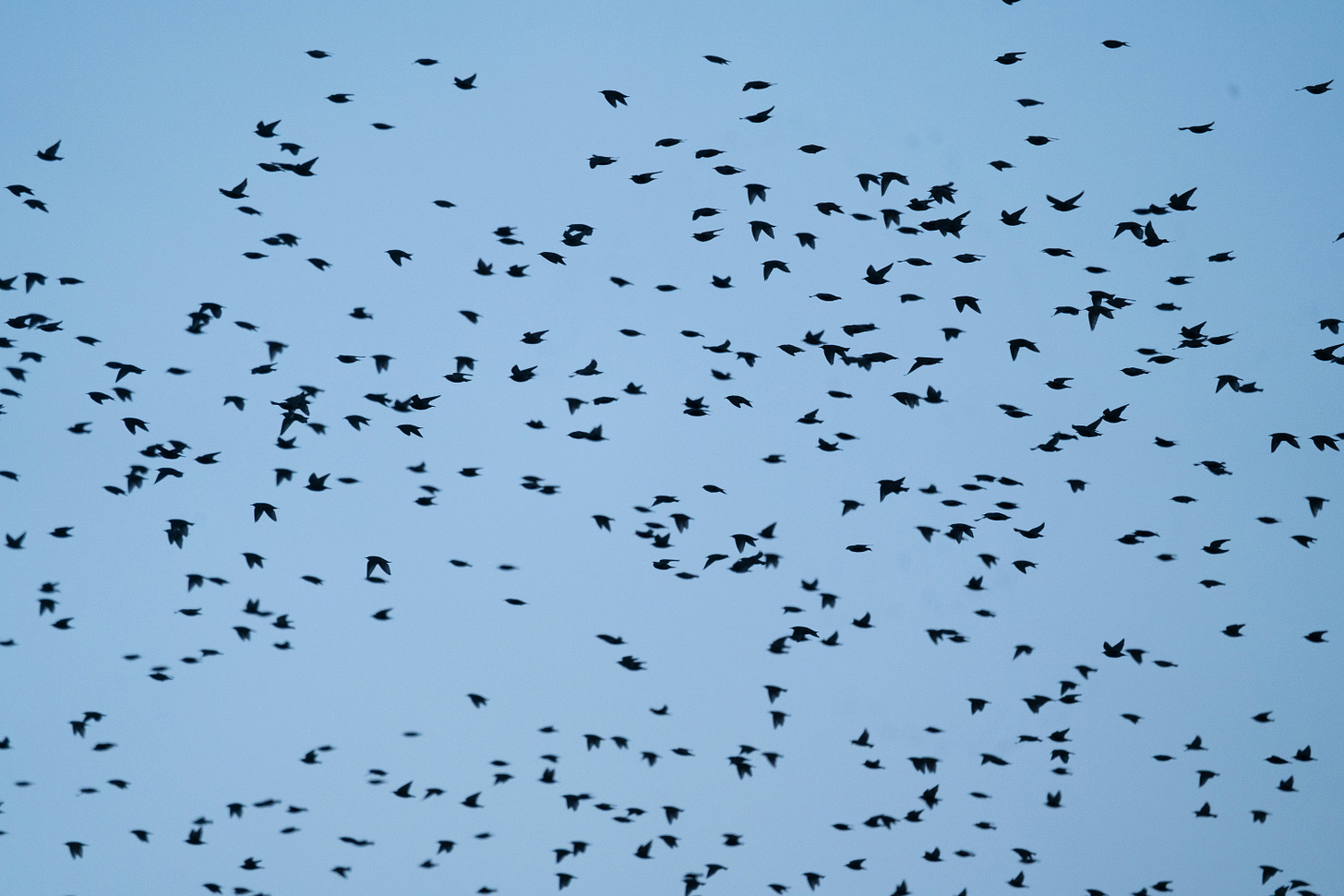
Determined to experience this amazing phenomenon for myself, I looked up my closest nature reserve, a wetland habitat. Perfect. It was just a short drive away. But sadly it wasn’t to be. My husband had to work late that night, and so we missed our opportunity.
The following evening found us trundling along down the country roads just as the sky began to darken. I practically jumped out of the car and raced to the wooden shelter overlooking the water in anticipation. I peered into the dusk, my eyes adjusting to the changing light.
“Look!” I exclaimed, pointing at a comma like mark in the sky. “There they are!” It looked more like a swarm of mosquitoes from this distance. “Where?” asked my husband.
The shape shifted. There one moment, gone the next. It continued to appear and disappear in the magenta sky. It was definitely a murmuration, but it was moving away from us. We had missed it. Head hung low, I trudged back to the car. Maybe I needed to move to Wales.
I am regularly reminded that natural phenomena cannot be summoned on demand, or simply by wishing for it. The more you try to see something, the more elusive it can become. Remember the Fox?
I satisfied my curiosity by looking into murmurations a little more. The reason why starlings behave this way is still being researched, but there are a few theories. One is to evade predators and demonstrate strength. A bird of prey is likely to be confused by thousands of birds twisting and turning at once. Although Peregrine Falcons have been known to dive into the middle of one in order to capture their prey. I say a bird deserves its prize if it’s brave enough to do that!
The second reason is for warmth. Starlings are resident to the UK (although in winter our resident population is boosted by birds from mainland Europe) and so they do not migrate. Therefore, they need to survive the cold winters. Thousands of birds roosting together enables them to share body heat as well as exchange information.
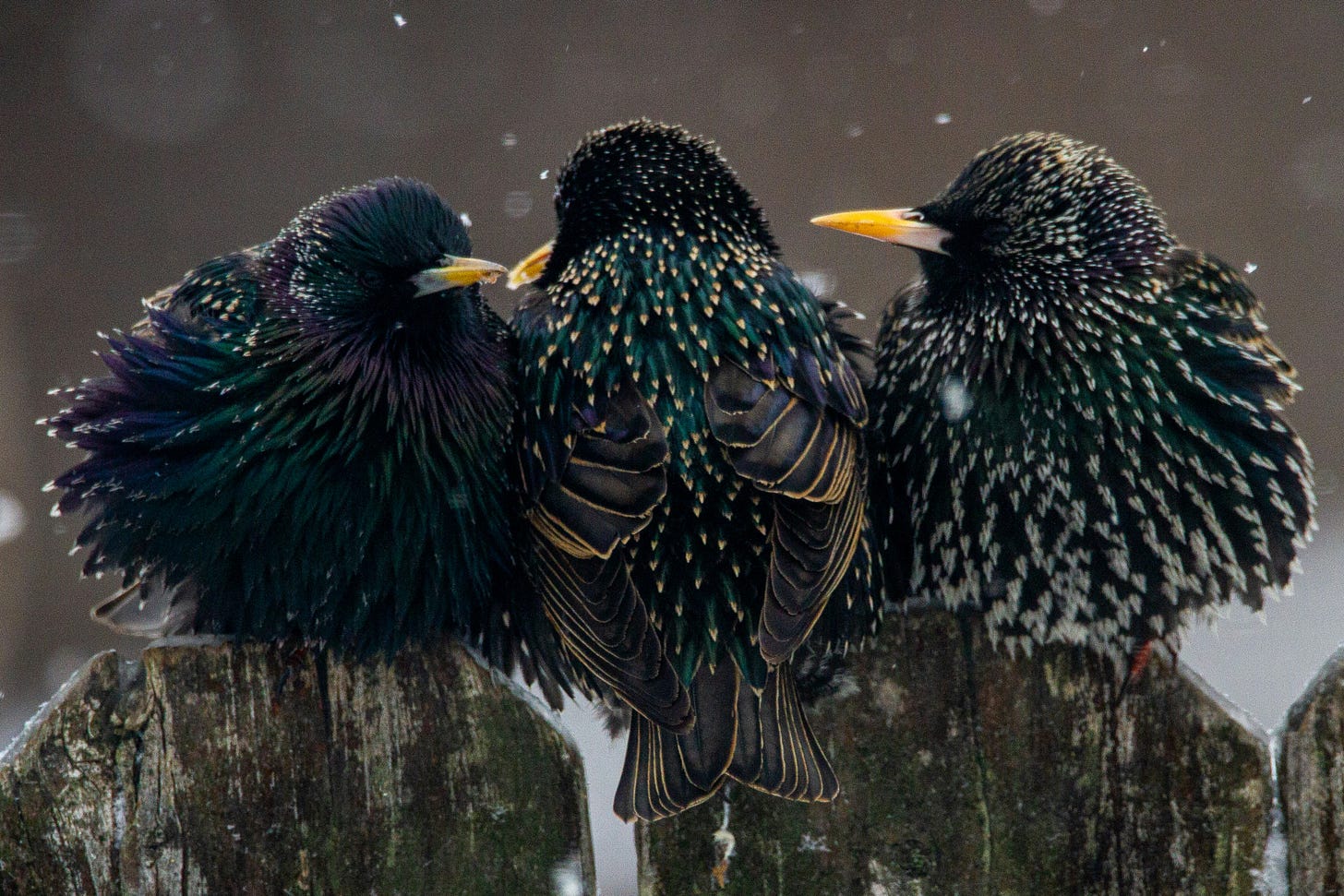
Disappointed by my failed attempt at seeing the dazzling display of aerobatics at sunset. I didn’t try again, and as time went on, I gradually forgot about it. I couldn’t connect the bullies at the bird feeder, who could empty my trays of fat-balls in mere minutes, with those talented acrobats capable of creating stunning displays that delight and awe.
I recently discovered that starlings have actually evolved to decimate the stock of food at my bird table. Not simply because they are greedy, but because they need to feed quickly in flocks.
They are noisy too. If there’s a racket in the garden, it’s likely to be the starlings.
At first glance starlings don’t look that impressive. They simply look black. But when you see them up close, during the breeding season, and especially when sunlight shines on them, you will see that they have glossy feathers of iridescent green, purple and blue. A little like seeing oil on water. They are quite beautiful.
I was surprised to learn, even though I now see so many of them, that they are in fact on the UK’s conservation red list of threatened species.
Starlings are also considered a pest in the United States agricultural sector because they cause millions of dollars in damage to fruit crops and consume large amounts of animal feed. They are a nuisance in urban and suburban areas because of the mess they leave around roost sites and their habit of nesting in buildings.
But when they can produce a display that engenders such a sense of awe and wonder – perhaps they’re worth the trouble?
Still, I was yet to witness that display for myself…
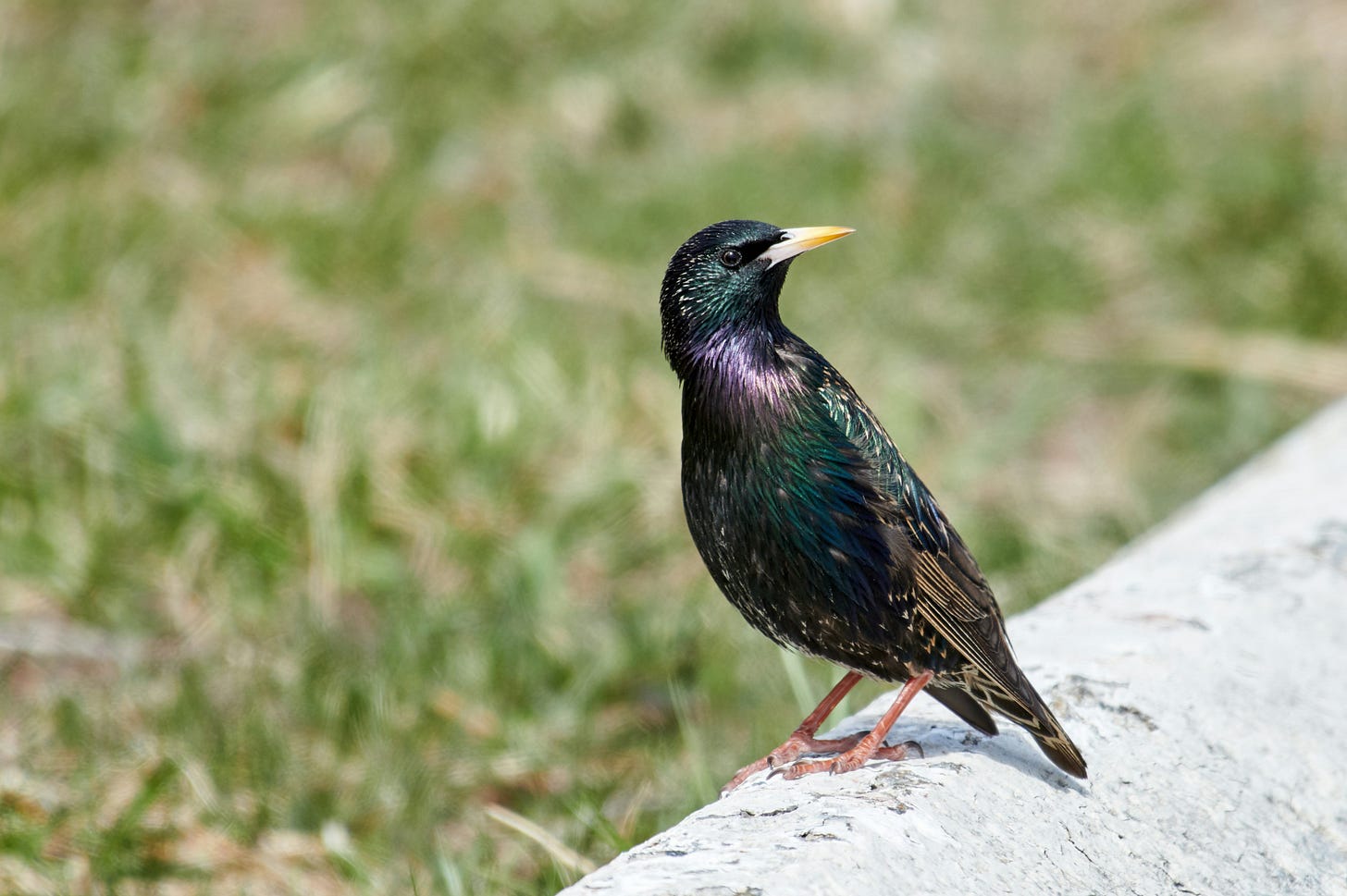
Then, in 2019, we moved to rural Yorkshire. We were not too far from a wetland nature reserve, and starlings became a much larger part of my life. Hundreds of birds would sit in the trees on my neighbours land. They would all chatter at once, making an amazing sound that would have me looking around for running water, or the beginnings of a rainstorm. There were clearly hundreds of birds up there, but they were hidden in the trees, and it seemed they were not up for any aerobatics.
They appeared again in the autumn. The year I discovered that cherry laurel produces fruit. My parents kept theirs so well pruned, I was completely unaware of this fact. But the starlings knew better, and as my neighbour allows his to grow in a much wilder fashion, the starlings could gorge themselves on the shiny purple fruit. They would hang out around the edges of my garden, feasting on their bounty, and I would discover cherry stones on my doorstep and my balcony. Tired of needing to pick them up to save my dogs from eating them, the starlings were certainly not my favourite birds. As they peppered my poor neighbours front step with purple droppings, the thought of magnificent murmurations was far from my mind.
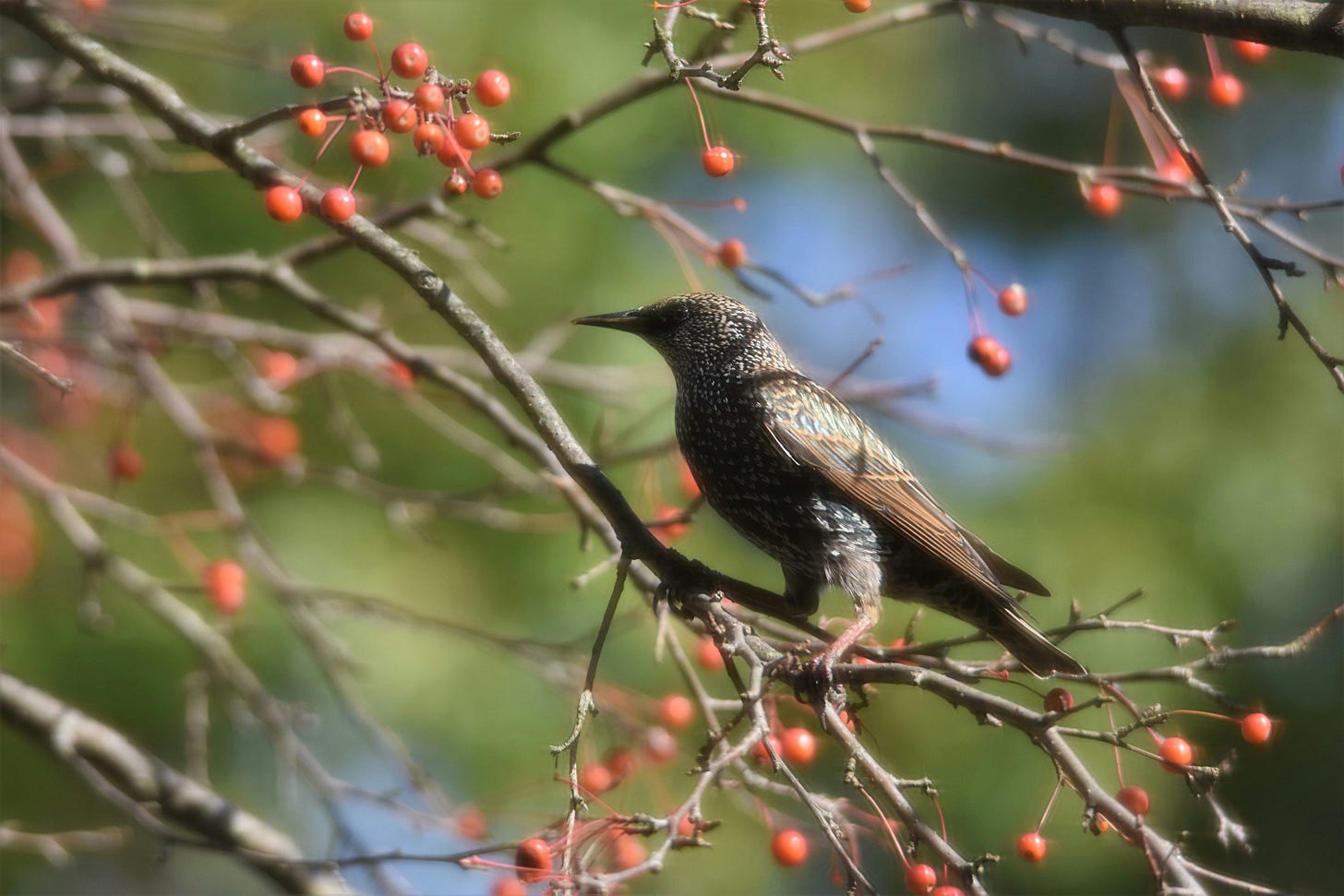
Sometimes starlings would gather on the telephone lines outside my house. Hundreds of them lined up, chattering, rattling, whistling and warbling. Some of the sounds they made almost didn’t sound like birds at all.
I could hear a playful bubbling watery sound, with an electronic undertone like some new age synth music, or mechanical clicks. I recently discovered that starlings have an amazing ability to mimic other birds and sounds from their environment. Some captive birds even mimic human speech, and mechanical noises. This explains why they don’t sound like typical birds.
You can hear some examples of the starling’s birdsong here
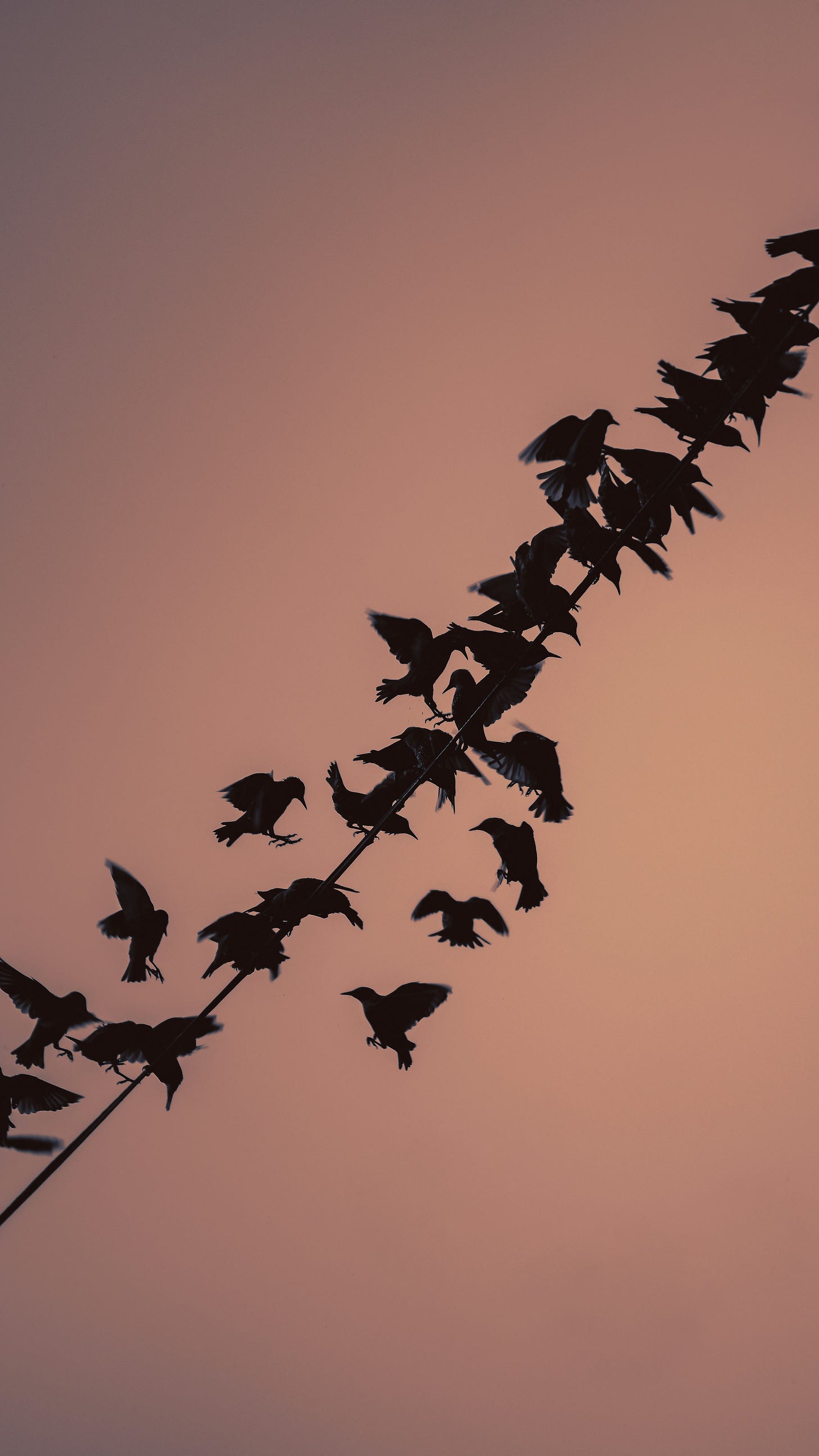
Then, one day, finally, it happened. We were on a bridge over the docks of our local town, and there they were. As the warm orange light from the sunset glistened on the river, hundreds of birds swooped in unison above our heads. We watched in wonder, as, with the backdrop of the ships in silhouette, they swooshed gracefully like an artistic flick of a paintbrush on the canvas of the sky.
Starling murmurations can vary from just a few hundred individuals to over a million. The largest known gatherings in the UK total about 6 million individuals, although estimates from Italy suggest a stunning 10 million starlings!
I gasped in awe and quickly opened my car window, sticking my head out to get a better view. That was a mistake. Why on earth hadn’t I considered that when that many birds were in one location, chances are that at least a few of them would need to answer nature’s call? I spent the next half hour cleaning the mess off my arm, the windows, the seatbelt and the interior of our car. My husband was not impressed.
And so, my dream of a glorious spectacle of a starling murmuration, like the one my friend had witnessed, was quickly put to the back of my mind.

That was until this week, when, on my evening dog walk, I was contemplating what I might like to write next for my Substack. I like to write about creatures that I have some kind of personal experience with, ideally recently. So, I looked around my garden to see who might be interested in featuring. Could it be rats? I’ve seen more than a few signs of them around recently. Or sparrows? Who like to accompany me on my daily dog walk? My resident badger is proving elusive, he’s not ready to star just yet. Maybe I just didn’t have anything interesting to write about this week?
Then I heard a whoosh in the sky above me. It sounded like a sudden gust of wind through the trees. I glanced up and gasped. My dog jumped and looked worried. “It’s ok.” I said to him. “But ‘wow!’” It was a small murmuration of starlings, heading in the direction of the wetlands. My heart soared upwards towards them. “Thank you!” I whispered. It’s time to write about starlings.
Little did I know, it was about to get better, so much better!
Join me tomorrow for part two, to hear what happened next.
Meanwhile, what are your experiences with starlings?
INFORMATION SOURCES
https://birdfact.com/birds/starling/starling-murmuration
https://www.discoverwildlife.com/animal-facts/birds/facts-about-starling
https://www.allaboutbirds.org/guide/European_Starling/sounds

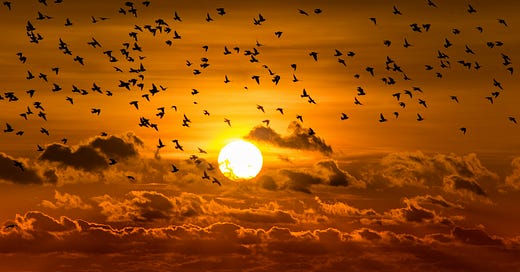


Enjoyed this - a surprise murmuration must be the best kind of murmuration! We don’t get starlings in our garden but I did manage to write about two starling experiences last year: a murmuration and a character who landed on our lunch table.
https://anotherdisappointingwalk.substack.com/p/murmuration-communication
https://anotherdisappointingwalk.substack.com/p/five-starling-review
I love starlings and actively encourage them to my garden. They are great for getting rid of pests.
Some of our population definitely mimic mobile phone ringtone which is confusing when they are on our roof lol :-)